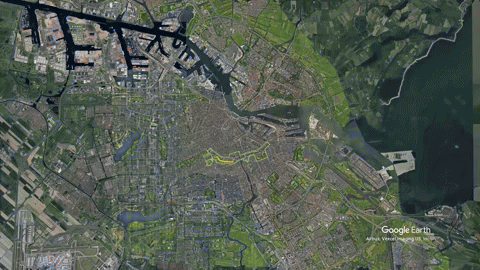How do you measure ‘livability’ from public improvement projects and new policies?
The Challenge:
The Green Mile aims to transform Amsterdam’s most polluted street, the Stadhouderskade, into a sustainable, green, and inclusive space for people, plants, and animals. Currently dominated by traffic and pollution, this street has enormous potential due to its natural features and strategic location. The Green Mile Foundation, in collaboration with residents, organizations, businesses, and the Amsterdam municipality, is driving this initiative through physical interventions, research, and events. Six companies, including UNStudio and the Rijksmuseum, have committed to this cause, envisioning a vibrant, healthy, and future-proof street. Co-creation and collective effort are key to making this vision a reality.
The Solution:
By asking a local resident to host a sound sensor (dB) and UNStudio Office to host the air quality sensor (ppm), CO2 levels (ppm), humidity (g/m³), particles (0-55μg/m³), air pressure (hPa), and air temperature (˚C), we were able to start benchmarking the various transformation projects along the Stadhouderskade. The results were fascinating. The sound and environmental data clearly illustrated the ‘before-and-after’ livability snapshots from the various transformations, such as the street reprofiling in the summer, the road closure during the Amsterdam Marathon in the fall, and the change from a 50km to a 30km inner-city speed limit and the ban on residential fireworks in the winter.
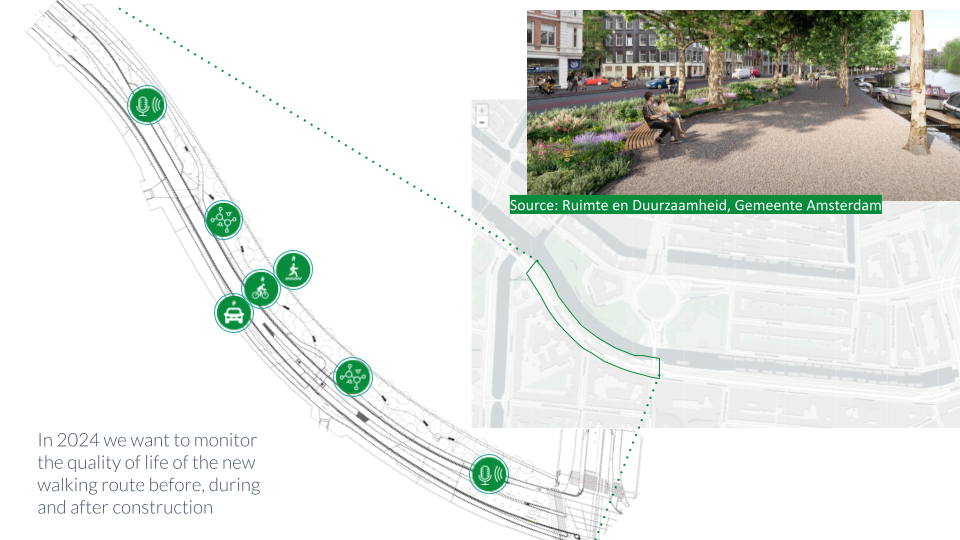
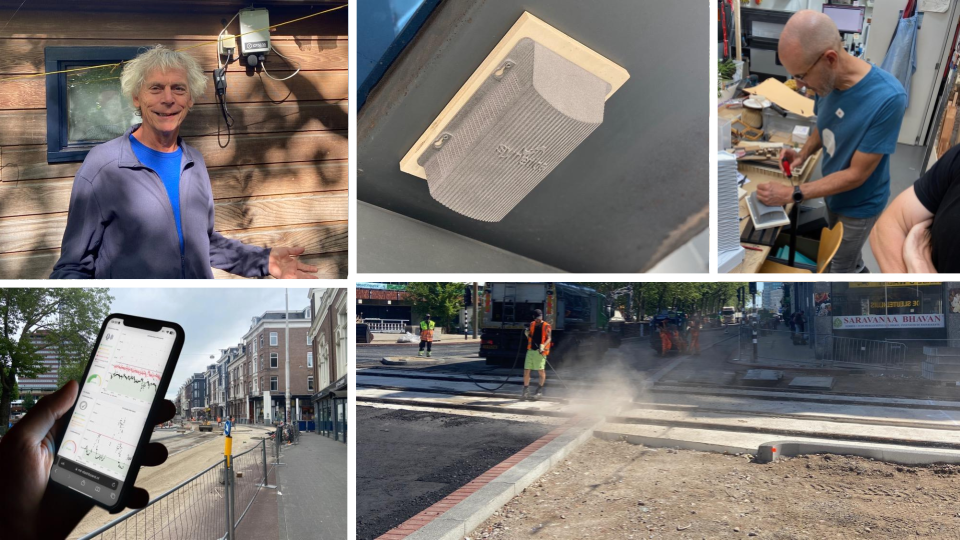
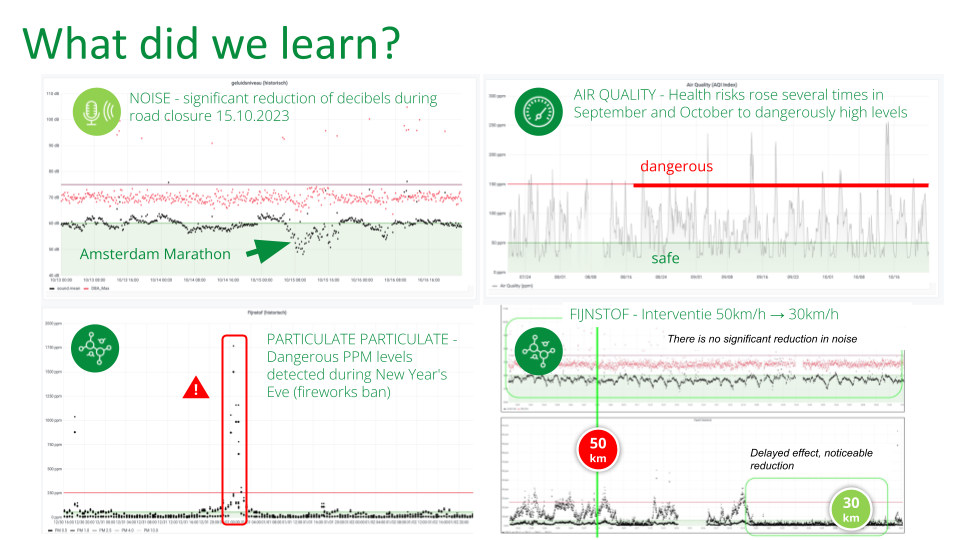
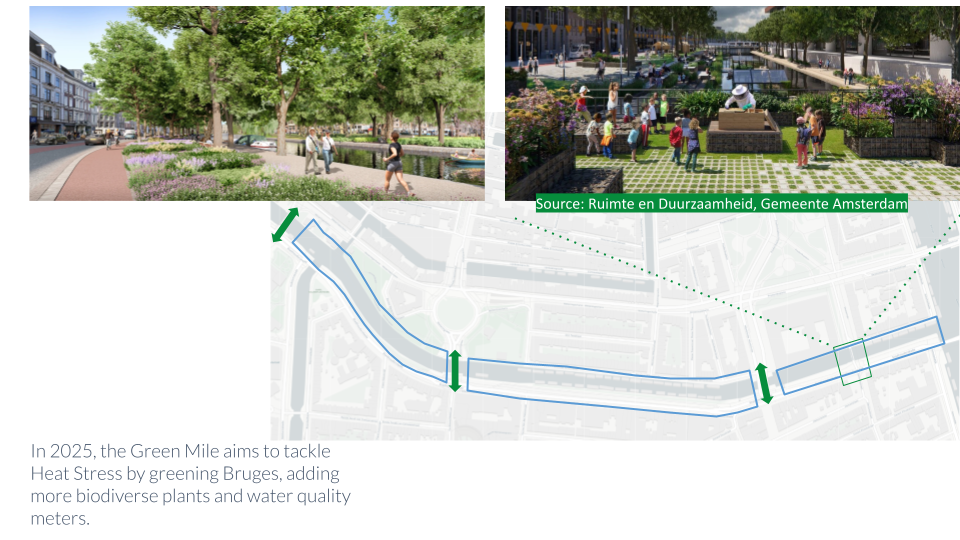
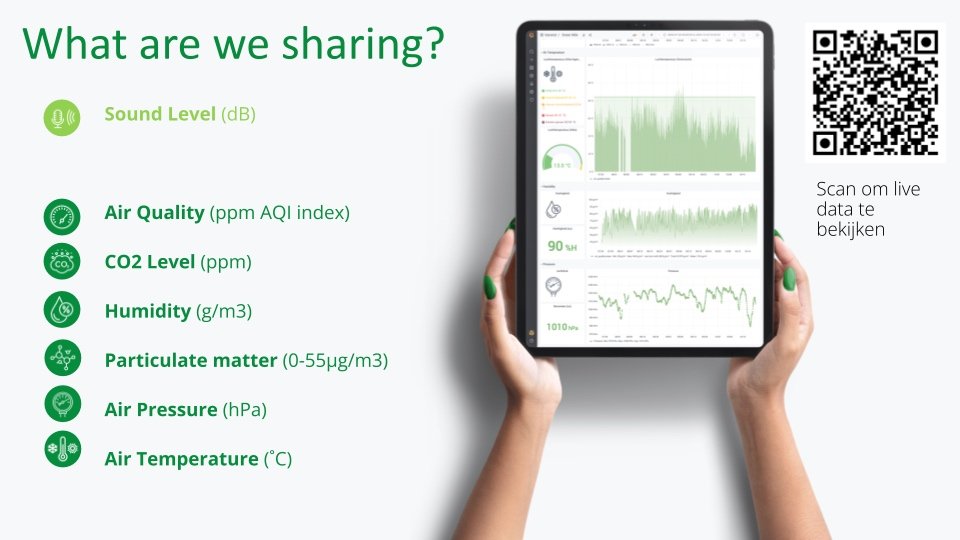
Location: Stadhouderskade, Amsterdam, The Netherlands
Year: 2023
Duration: 1 Year
Partners:

